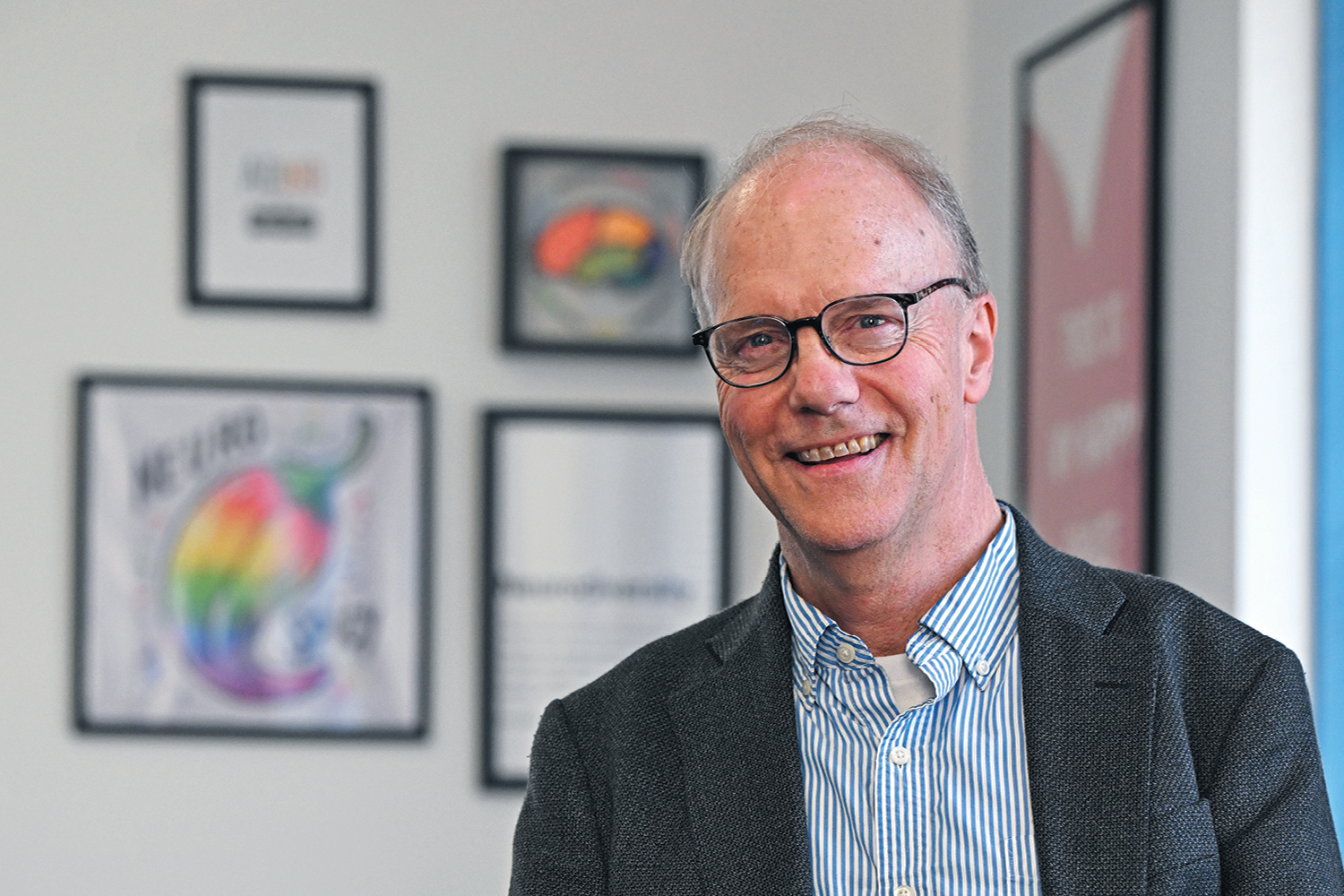A Beautiful Twist
As Conn celebrates the opening of its Disability Cultural Center, educator and activist John Sharon ’86 reflects on his own reckoning with disability identity.
Iwas not the first physically disabled student at Connecticut College. That distinction apparently goes to a student who was on campus in the late 1960s, right before or around the time the school went co-ed. I was told that she had cerebral palsy and used a walker to get around. I don’t know her name or if she graduated, but before I tell my story, I think it’s important to acknowledge that she is someone whose shoulders we all stand on—even today.
It was August of 1982 when I arrived with a car full of too much stuff on the steps of Windham dorm. My head was full of too much stuff, too; I was excited to be away from home for the first time and anxious to get this college chapter started. At the time, I didn’t think much about disability or accessibility or who I was other than just an eager 18-year-old who wanted to fit in. In fact, I didn’t think about my identity much at all back then, to say nothing of my identity as a disabled college student. That would come in the next few years, as much to my own surprise as anybody else’s. Let me explain.
In 1964, I was born with a rare condition called arthrogryposis multiplex congenita, which causes stiff and fixed joints. And I was also born into a family who did everything they could to make me feel “normal” (although I dislike that word), just like everyone else. From my earliest memories, I knew I was 100% the same as everybody else because that’s the way my family treated me. But I also knew from my earliest memories that I was 100% different from everyone, too. I remember being 4 years old and my mom carrying me across the parking lot after a doctor’s appointment and yelling at someone. She got in the car, slammed the door, and said something about staring.
So I have lived in this duality all my life—the worlds of same and different. And when I got to Conn that fall, I wanted badly, so badly, to be in the world of same that I did not think about the world of different and what that meant.
But something odd happened almost right away. I noticed that people started recognizing me, saying hello to me by name. Yes, of course deep down I knew it was because I walked like a drunk penguin, but I didn’t acknowledge it—not then. So that fall, on a whim and because all these people seemed to know who I was, I decided to run for freshman class president. Mind you, I didn’t take it very seriously and did it as a bit of a joke. But the joke was on me, because I ended up winning that election, and suddenly I had to start acting, well, presidential. And suddenly I had to start thinking of policies and procedures and what we could do to make students’ lives better. But I still wasn’t thinking of myself as disabled, wasn’t thinking about accessibility.
That would come later, when one day after government class (on the fourth floor of Fanning Hall), I was walking down the stairs when a few friends stopped me and said, “Hey, what do you think about accessibility at Conn?” Accessibility at Conn? Was that even a thing? These friends had been taking an education class that term, and the topic of Conn’s accessibility (or lack thereof) had come up in the day’s discussion. These sweet friends were truly baffled by my reply: I had never really thought about it before. But over the next several months, I started to get curious, and the more I looked, the more I saw. And the more I saw, the more I realized that the campus was almost completely and thoroughly inaccessible for anyone who might use a wheelchair for transport, who might be deaf, who might be blind. And I started to get mad.
